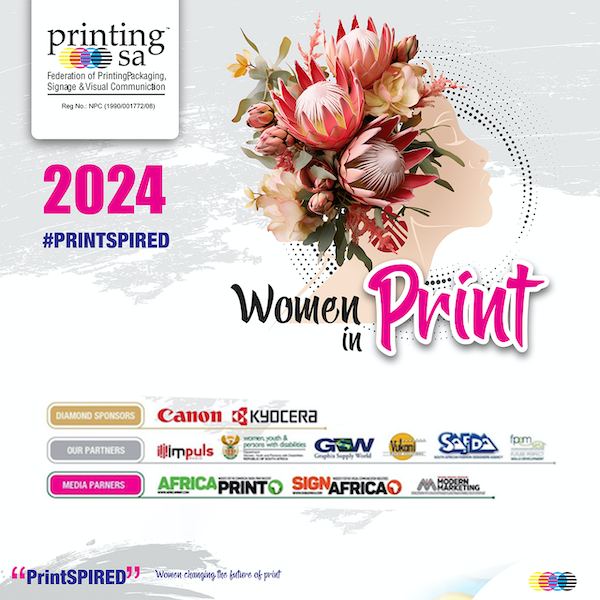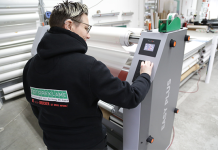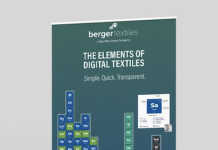Sign Africa celebrates Women’s Month by interviewing some of the female trailblazers who are making strides in the industry. They give their take on major industry trends, as well as advice to young women starting their careers in the print industry.
What trends do you predict for the future of the print industry in relation to digital media?
Heidie-Mari Middel, Production Team Leader, Production Print at KYOCERA Document Solutions South Africa, said it is increasingly catering for the ‘niche’ market in the form of shorter runs of very personalised and individual printing of content. For example, wine labels and the packaging that goes with it. ‘We see this a lot in the liquor industry. Educational books, coupled with the story and illustration of the book based on the area and language of where the children are being taught, will be easier to facilitate. The use of QR codes and the integration of digital tools, together with the physical print, will become more advanced and will be used more to leverage both advertising on print media and digital media platforms. This will be done where you can scan a barcode and access the digital media site that offers videos and different types of information to engage with your consumer more,’ said Middel.
Middel has also noted the enhancements in print quality. ‘If I look at inkjet as a technology 10 years ago versus today, it has evolved and grown immensely. Our company has made a lot of progress in the development of printhead technology, keeping in mind that it needs to be innovative and sustainable – using eco-friendly materials and processes. Products are more self-sustainable, like the new printhead we launched at drupa, with its own water cooling and self-cleaning system,’ said Middel.
Where do you see the most significant opportunities for growth in combining print and digital strategies?
Teresa Adinolfi, Managing Director, Redfern Labels, said the most significant opportunities lie in enhancing customer satisfaction and operational efficiency. ‘By leveraging advanced Enterprise Resource Planning (ERP) systems and optimising workflows, we can improve teamwork and streamline processes. Hybrid printers, which blend digital and conventional technologies, offer the advantage of maintaining CMYK options while adding spot colours for higher-quality prints.’
‘Although these printers are currently expensive and their technology is evolving rapidly, making it hard to choose the right time to invest, they represent a promising development for the future of print. Integrating these solutions with digital advancements helps us better meet customer needs, ensuring timely, accurate delivery and superior results. This synergy between print and digital strategies enhances reliability and provides customers with peace of mind,’ said Adinolfi.
What are the biggest challenges you face in bridging the gap between print and digital media?
Middel said that one of the biggest challenges is audience engagement. ‘It is challenging to keep the modern audience intrigued and captivated, so you have to make sure that what you produce is well designed, is catchy and sends the right message. To be able to do that, you often have to use a lot of different printing techniques like embellishments, spot varnishing, foiling, wordplay and clever use of colour that all add up to the cost. A lot of the time there is budget constraints that make this very difficult to compete or fill the gap between print and digital.’
‘With digital, it is easier to engage and use different interactive elements across different platforms. With print, we often must also rely on the substrate we used and hope we have captivated the right audience. But it is also very limited in the sense that it can only be distributed in a specific area – targeting a specific target market. With each new campaign, the process starts all over again, as with digital it can just be tweaked and be used almost immediately,’ added Middel.
What advice would you give to young women entering the print industry today?
Adinolfi said that the printing industry is vibrant and welcoming to women across a wide range of roles. ‘Opportunities extend beyond the creative realms of design and print production to include positions in sales administration, production administration, estimating, cost accounting, operations, production management, quality control, health and safety, procurement, stock management, accounting, payroll and human resources.’
‘Women possess unique strengths such as meticulous attention to detail, patience and strong administrative skills, which are invaluable in this field. My advice to young women entering the industry is to fully immerse themselves in the diverse world of print. While you might start in a specific role, remain curious and explore various aspects of a print business. You might discover unexpected passions and opportunities as you navigate the dynamic landscape of print.’
Middel said you should gain as much technical skills and knowledge as possible. ‘Knowledge is power. You also need to be aware of all the new technologies that have been released, as well as the trends and how they all interact with different types of sectors within the print industry.’
Middel also advised women to build relationships across all available platforms. ‘This will provide mentors that can help and guide you, and you will be able to map your career, and receive advice from people that are successful and have been through the teething steps. It will also create opportunities to grow,’ concluded Middel.
PRINTING SA
+27 11 287 1160
info@printingsa.org
http://www.printingsa.org















